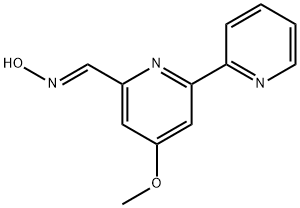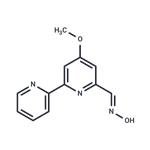Description
Caerulomycin A (21802-37-9) chemically novel and potent immunosuppressive agent. Suppresses T cell activation and IFN7gamma; secretion?in vitro?and?in vivo.1 Caerulomycin A induces expansion of regulatory T cells by via interfering with IFNγ -induced STAT1 signaling.2
Uses
Caerulomycin A is a pyridine derived antiobiotic with a broad spectrum of bioactivity.
Uses
Caerulomycin is a rare and unusual antibiotic containing a core 2, 2’-bispyridyl with an oxime substituent, produced by a strain of Streptomyces caeruleus isolated in Canada in 1959. Caerulomycin is active against fungi and some protozoans, and is weakly active against bacteria. While its discovery has stimulated some synthetic effort, little is known about the mode and spectrum of action of caerulomycin.
Definition
ChEBI: Caerulomycin A is a pyridine alkaloid that is 2,2'-bipyridine substituted by a methoxy group at position 4 and a (E)-(hydroxyimino)methyl group at position 6. Isolated from the marine-derived actinomycete Actinoalloteichus cyanogriseus, it exhibits antineoplastic activity. It has a role as an antineoplastic agent, a marine metabolite and a bacterial metabolite. It is an aldoxime, an aromatic ether, a member of bipyridines and a pyridine alkaloid. It derives from a hydride of a 2,2'-bipyridine.
References
1) Singla?et al. (2014),?Caerulomycin A suppresses immunity by inhibiting T cell activity; PLoS One,?9(10)?e107051
2) Gurram?et al. (2014),?Caerulomycin A enhances transforming growth factor-beta (TGF-β)-Smad3 protein signaling by suppressing interferon-gamma (IFN-γ)-signaling to expand regulatory T cells (Tregs); J. Biol. Chem.?289?17515




